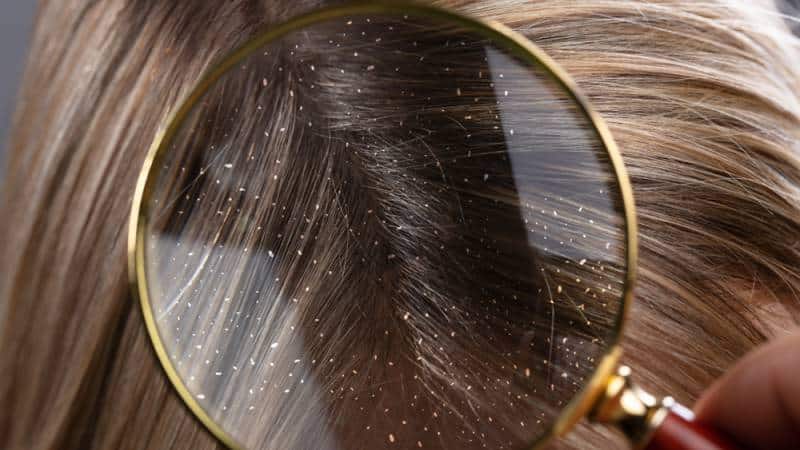There is a lot of debate over whether or not keratin treatments are good for low porosity hair. Some people swear by them, while others say that they do more harm than good. So what’s the truth? Is keratin treatment good for low porosity hair, or should you avoid it altogether?
In this article, we’ll take a closer look at what keratin is and how it works. Then, we’ll discuss some of the pros and cons of using this treatment on low porosity hair. By the end, you should have a better idea of whether or not keratin treatments are right for your unique needs!
Read on to learn more about keratin and its effects on low porosity hair.

What is Keratin?
Keratin is a naturally occurring protein found in the outer layer of skin, nails, and hair. It’s made up of thousands of tiny amino acids linked together to form long strings. These tiny chains are what give hair its structure and strength.
When keratin is exposed to heat or chlorine, for example, it can weaken and break. This results in damage to the hair – both from the outside (such as split ends) and from the inside (due to weakened strands).
That’s where keratin treatments come in. These salon-grade treatments are designed to strengthen and smooth hair, helping it look healthier and more vibrant. They work by coating each individual strand of hair with keratin proteins, resulting in a smoother texture that’s less prone to breakage.
Although keratin treatments have gained popularity in recent years, they have actually been around for quite some time – they were originally developed in the early 1900s to help reduce hair breakage and improve texture.
See Also: Keratin Treatment for Hair

What is Low Porosity Hair?
Porosity refers to the way your hair absorbs and holds moisture, and low porosity hair is just that – it has a harder time absorbing and retaining moisture. This makes it challenging to apply products like conditioners or treatments since they often contain water-based ingredients that are unable to penetrate into the hair shaft.
Unlike high porosity hair, which is often damaged due to excessive heat and chemicals, low porosity hair is often quite healthy. It doesn’t easily absorb moisture from the air or products, though, which means it can appear dry and brittle despite having plenty of natural oils built up on the surface.

What to Avoid if You Have Low Porosity Hair?
Since your hair is already difficult to absorb moisture, it’s important not to use harsh chemicals or products that will further prevent it from absorbing what it needs. This includes certain shampoos, hairsprays, and any product containing alcohol (which can dry out low porosity hair).
Gels, mousses, and anything that needs to be heated for styling should also be avoided. When these products come in contact with your hair, they create tiny holes (or “bubbles”) which allow moisture to escape. This can result in dryness or breakage over time.
At the same time, it’s important to avoid excessive heat, since this can also dry out your hair and lead to breakage. This includes using hair dryers, flat irons, curling irons, or any other heated styling tool on a daily basis.
Stay away from products that contain silicone – this is particularly important if you have low porosity hair. Silicone is one of the most common ingredients in many beauty and skincare products, but it can actually work to seal off your hair follicles, preventing moisture from penetrating deep into the shaft.
All protein treatments, such as protein-based conditioners or hair masks, should also be avoided. Although they may make your hair feel smoother and stronger in the short term, they can actually work to further weaken it over time.

So, is Keratin Good for Low Porosity Hair?
If you have low porosity hair, it means that your hair strands are already packed with keratin protein. This makes it difficult for them to absorb moisture, and can leave your hair feeling dry and frizzy. This is why many people with low porosity hair tend to avoid keratin treatments – they can actually make the problem worse, by blocking off the hair cuticle with a thick layer of protein.
However, this isn’t always true. For some individuals, the right combination of keratin products and techniques can actually be beneficial for low porosity hair.
One of the most important things to keep in mind when using keratin treatments on low porosity hair is that it’s all about balance. You need to get your strands just the right amount of protein, without crossing over into major damage territory. That can be difficult, but if you follow these guidelines, you should be able to successfully integrate keratin treatments into your hair care regimen.
First and foremost, only use keratin treatments that are specifically designed for low porosity hair. These will contain a lower concentration of protein than standard treatments, which means they won’t be as damaging to your hair. You should also try to only apply the treatment directly to your ends – this will help minimize any damage further up the shaft.
Next, you should try to alternate keratin treatments with other conditioning and hydrating products. This will help ensure that your hair is getting the moisture it needs without becoming too dry or brittle. Some good options include leave-in conditioners, deep conditioning masks, natural oils like argan or jojoba oil, and mild clarifying shampoos.
It’s also a good idea to use products that contain fatty acids, as these can help seal in moisture and protect your hair from damage. Some great examples of these include coconut oil, shea butter, and avocado oil.
Finally, you should be gentle with your hair when you are styling it. For example, try using a wide-tooth comb or hair brush instead of a fine-toothed one, to avoid breakage. If possible, try to let your hair air dry as much as you can – this will help minimize damage from heat styling tools. And when you do use heated styling tools, make sure they are set at a low temperature, so that you are not damaging your hair with excessive heat exposure.

What’s the Bottom Line?
In conclusion, while keratin treatments may not be right for everyone with low porosity hair, they can be beneficial in the right circumstances. By following these guidelines and using the right products, you can help keep your low porosity hair healthy and hydrated, while still enjoying the benefits that keratin treatments have to offer.
Do you have low porosity hair? If so, how do you manage it and keep it healthy and moisturized? Share your tips in the comments below! We’d love to hear from you.


